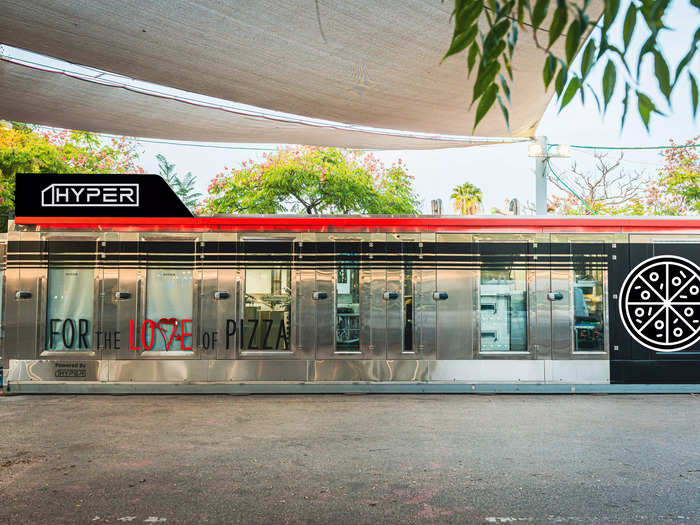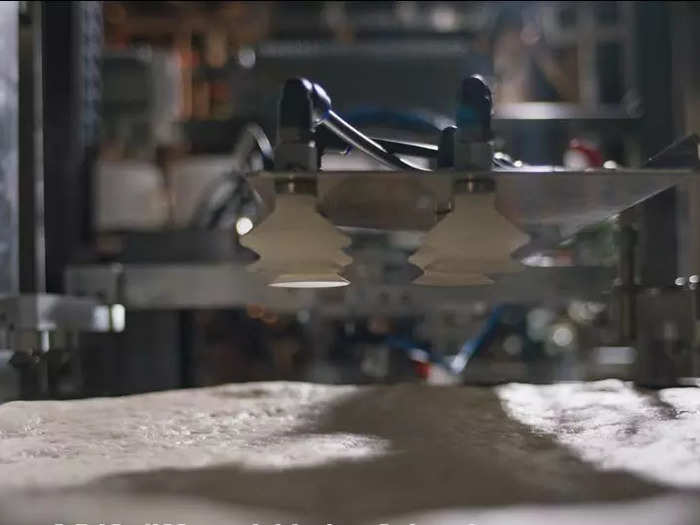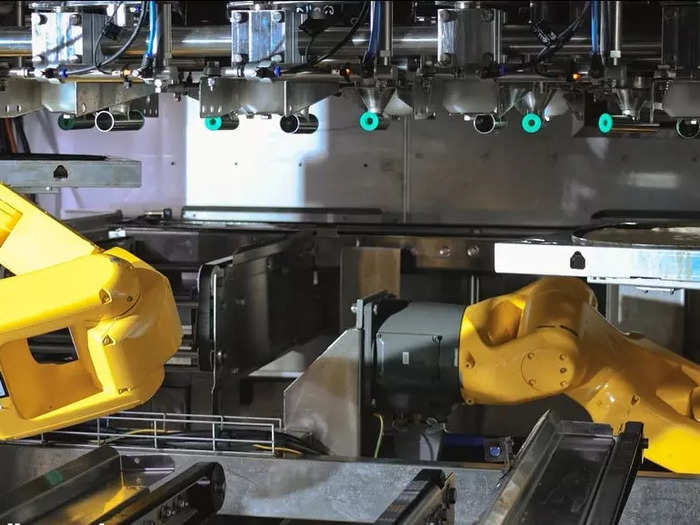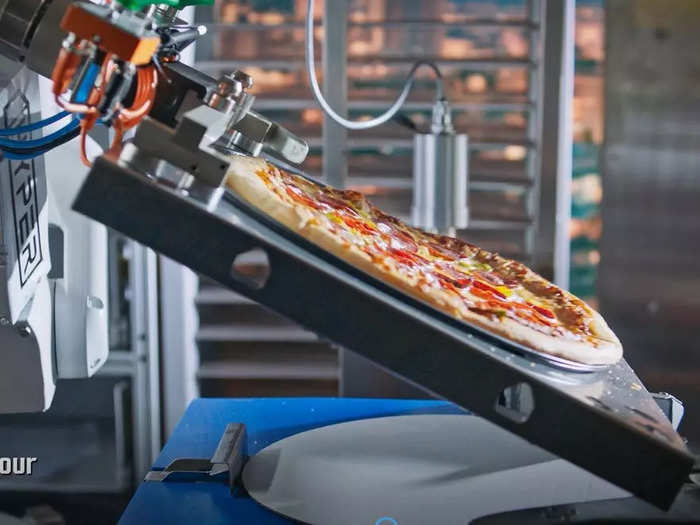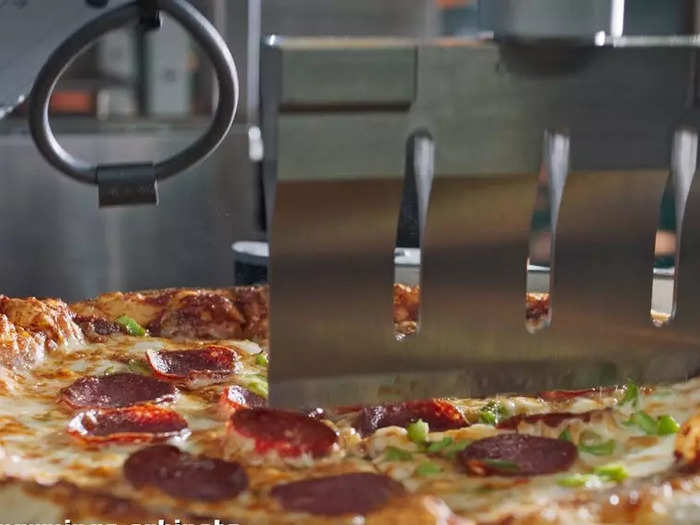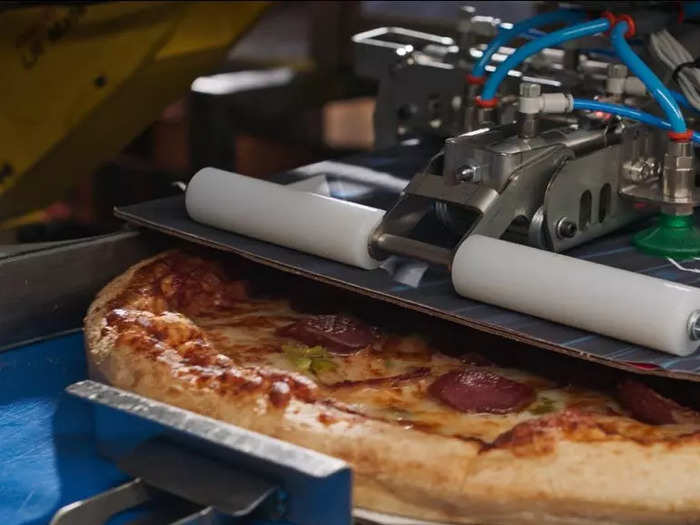Hyper Robotics is building 40-feet robotic fast-food kitchens filled with fully autonomous machines which don't require human staff.
Hyper Robotics' kitchen. Hyper Robotics
These container-like kitchens are completely self-sufficient. They can store, prepare, cook, and clean without the help of a human.
Hyper Robotics cofounder and CEO Udi Shamai told Insider that it takes one month to produce one kitchen and the company is aiming to build ten a month. Production is still in the early stages.
"You can place it anywhere you want," Shamai said. "It's like a huge vending machine."
Each kitchen has autonomous freezers, ovens, and cleaning systems inside.
Hyper Robotics' kitchen making pizza. Hyper Robotics
Frozen food can be stored in the kitchen's freezers until the robots take it out, defrost it, and cook it for customers.
With pizza dough, for example, the robots will stretch and proof it. From there, it goes into a dispensing area where the toppings drop onto the pizza.
The robots then slide the pizza into the oven. Once it's cooked, an autonomous cutting machine slices the pizza. Then it's boxed up and collected by the customer.
Every 40 minutes, a non-chemical ozone water system cleans the entire kitchen, which Shamai said was the most challenging part of building the kitchen.
"It's bulletproof in terms of no insects can come in, and no bacteria," Shamai said.
Metal detectors and AI cameras check the food for any mistakes.
Hyper Robotics' kitchen making pizza. Hyper Robotics
The AI cameras take pictures of every single item of food that is cooked in the kitchen to check the robots have scattered the toppings properly and prepared the dough correctly. This is important as there's no human to witness the process, Shamai said.
When the food is almost ready to be collected and reaches the boxing-up area, it's handed over to the metal detectors to scan for any unwanted ingredients, per Shamai.
The first robot kitchen that Hyper Robotics built was designed for a Pizza Hut location in Israel. It can make 50 pizzas an hour.
Hyper Robotics' kitchen making pizza. Hyper Robotics
At first, Hyper Robotics didn't tell people who had bought the pizza that it had been made by robots but they were surprised to find out that was the case, Shamai said.
"People ask about the robots, but the truth is that almost every food that we eat is industrial and made by machines — people just don't think about it as robots," Shamai said.
Hyper Robotics hopes to produce chicken wings, cheese fingers, salads, and other side dishes from its autonomous kitchens.
Hyper Robotics' kitchen cutting a pizza. Hyper Robotics
Shamai said that Hyper Robotics is launching one of their autonomous kitchens in the US in June. This will be able to make eight side dishes, including chicken wings, salads, and cheese fingers.
If a customer requests a dish they really need, "we can always try to assemble something that works for them," Shamai said.
This means that some kitchens might have different appliances inside — a kitchen that makes burgers will vary from a kitchen that makes pizzas, for example, Shamai said.
If the electricity drops, then the whole kitchen is out-of-order, Shamai said.
Hyper Robotics' kitchen sliding a pizza into a box. Hyper Robotics
Technology isn't always reliable — if the electricity supply for the kitchen cuts out, then it's not able to operate, Shamai said.
If there's a malfunction inside the machine, then the kitchen can still run because nearly every appliance is doubled, he said.
However, in the pizza kitchen, there's only one cutting machine so if that breaks, then that poses an issue, Shamai said. It could take an hour or two before someone fixes the problem.
"There's so many things that could happen, but also in a regular store, so many things can happen," he added.

